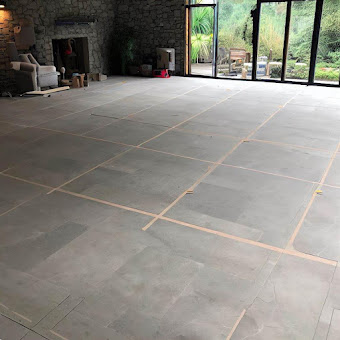On July 13th, Kalki 2898 AD, the Tollywood film claimed to have grossed 1000 crores of rupees, a significant milestone for Indian cinema. This is the seventh movie to accomplish such a feat. Bollywood films such as Dangal, Jawan, and Pathan are included in the Rupees 1000 Crore Club. Tollywood's Baahubali 2, RRR, and Sandalwood's KGF 2.
Kalki 2898 AD, an epic-based dystopian fantasy that introduces a completely new genre to Indian audiences, is a standout on the list. The film has outperformed its budget by earning twice its cost.
The film is directed by Nag Ashwin, who has previously directed three films. His vision for developing the backstory and the cinematic universe is unique and commendable. as this was a risky venture, that would have bankrupted his entire family fortunes.
The director's lack of significant experience dealing with complex technical aspects is evident on the screen as an unpolished, raw product. However, it is worth noting that renowned directors such as SS Rajamouli have honed their craft over multiple films, spanning decades, correcting technical flaws, know-how, and limitations that he improved with each subsequent film.
Here is the list in no particular order.
1. Reliance on Hollywood for Art and Universe Building. Missing Originality
There is a large amount of borrowed material in the universe that a Hollywood sci-fi enthusiast will easily pick up. For the majority of the target audience, this is not an issue, as they have little to no exposure to this content.
References:
- Guardians of Galaxy 1: StarLord intro, fighting style, personality, and gear and equipment that allow him to fly
- Guardians of Galaxy 3: Knowhere looks to have lended the sets to Kaashi.
- Black Panther: Shambhala and its world
- Tron: Rebel futuristic levitating vehicles
- Elysium: Androids, Complex, Classes of People, Exoskeleton by Bounty Hunters
- Total Recall 2016: Transport to Complex
- Halo Series: Weapons Used by Raiders
- Transformers and Power Rangers: Transformed BUJI
I am sure there are slight references to Mad Max Fury for chase scenes, Star Wars weapons and crafts, and Commander Manas looks reflect Darth Vader and Hanock, the anti-hero of Bhairava, in the 1st quarter.
2. The Uncredited Extras
The extras in the movie were more or less static and were not directed to act enough. The attention to detail by the assistant director on what and who to enact was missing in many of the action scenes.
- The Raiders driving hover vehicles had a fixed facial expression and body gestures and appeared mostly frozen. Alternatively, they could have worn a helmet to avoid this issue.
- Shambhala's rebels, when responding to Veran's call to face the attack, showed low energy.
- Kaashi's citizen extras were present to provide comedy or were too boxed in their limited scope.
3. Contrast in the World Building of Kaasi
The path to Kaasi at the beginning of the movie shows a dried-out Ganga river bed and banks reflecting a Dune-like universe; however, there is no such view in actual Kaasi, which looks more like Knowhere from Guardians of Galaxy 3 or Blade Runner.
4. Sum80, Sumathi, and Amma escape from Complex:
Sum80, when she finally escapes the tunnel, gets caught on fire and burns down completely. However, in the same way, her hair, including bodily hair like eyebrows, should have been equally burned. That didn't happen, possibly indicating she was wearing inflammable fabric or that she was immune to elements like fire due to her bearing the child.
5. Sound Track Mix:
I watched the film in two different formats, in two different countries, and on two different audio systems (configurations), only to discover that the sound designers and engineers did an extremely poor job. The audio rendering, combined with the background track, left me wanting more for moviegoers like myself.
- The track isolation was not clear.
- The base usage was not ideal.
- The low-frequency sound modulations and ranges used to move air, generate vibrations, and punches were severely underutilized.
- The contrast between silence and peak range was missing, and the track appeared flat.
- Even a trained ear had difficulty detecting surrounding effects, particularly atmospheric effects.
- The energy that audiology can bring in has been underutilized. For example, the audio sequence in Hanu-Man elevates and genuinely pumps adrenaline when it plays. Nothing of the sort occurred in Kalki. .
6. Music/BBackground Score
The background score or the original sound track lacked depth, punch, or melody, making it unnoticeable.
- The Track Ta Takkara relies on auto-tuning and is annoying. It would have been better if they had a better singer who didn't require auto-tune.
- The track Bhairavva Anthem used during the fight sequence with Punjabi vocals didn't mix well. It would have been better if it was kept as a stand-alone promotion track.
- The makers could and should have opted in for more Sanskrit-based tracks and background scores like in Hanu-Man; this would have added more energy instead of the hip
7. Cameo Roles
The number of cameo roles in the movie was ridiculous and seemed overdone. This also included the cameo of Disha (yes, it is a cameo) and the Jathi Rathnalu movie cast in the Ta Takkara dance sequence.
8. Mariyam's Fight
I felt that Mariyam's fight, which featured some levitating powers and the use of energy whips, could have been avoided and maintained a serene motherly image of her instead of turning her into a warrior, ultimately which led to her death.
There could be more, but these stand out. I hope the makers take note of and pay closer attention to these technical details, which improve the overall movie viewer experience while also assisting the makers in perfecting the art.
This is really a good film that could have easily been an excellent movie.











